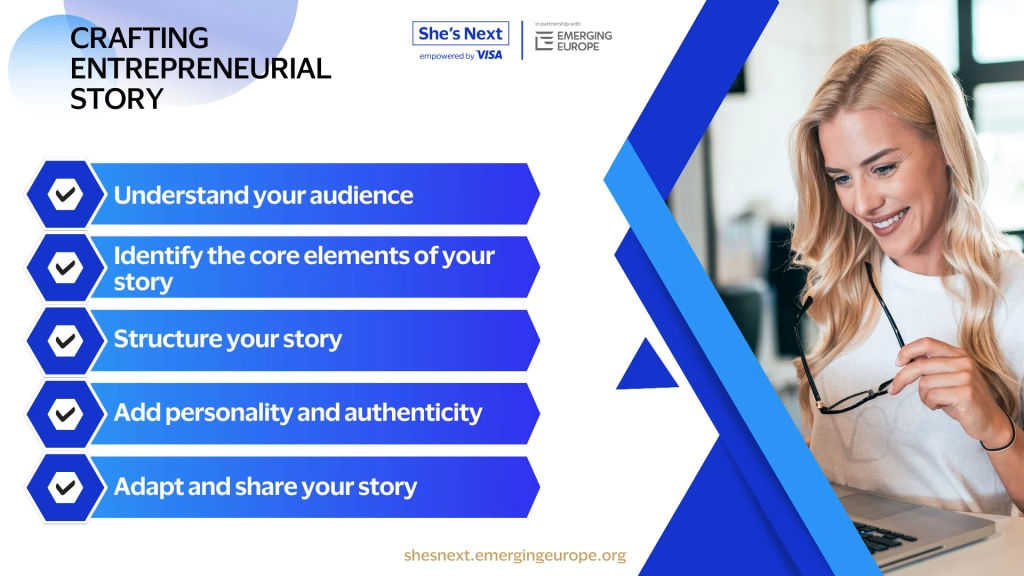
How to Craft Your Entrepreneurial Story for Branding: A Step-by-Step Guide
Storytelling is one of the most powerful ways to connect with your audience and bring your brand to life. As Robert McKee once said, “Storytelling is the most powerful way to put ideas into the world today.”
A well-crafted entrepreneurial story does more than share your journey—it builds trust, creates emotional connections, and differentiates your brand in a crowded marketplace.
This guide will take you through the steps to craft a story that resonates with your audience and strengthens your personal brand.
Understand Your Audience
Your entrepreneurial story is only effective if it resonates with your audience. Start by identifying who they are: Are they clients, partners, or investors? What values do they hold, and what challenges or aspirations do they have?
To align your story with their expectations, research their preferences through surveys, online discussions, or direct feedback.
For example, in Eastern Europe and Central Asia, audiences often value resilience and innovation—consider weaving these themes into your story. A tailored narrative will ensure a meaningful connection that drives engagement.
Identify the Core Elements of Your Story
Every impactful entrepreneurial story includes four essential components:
Your “Why”: What inspired you to start your journey? Did you notice an unmet need or experience a pivotal moment?
The Challenge: Share obstacles you faced and how you overcame them. Be honest—authenticity fosters trust.
The Solution: Highlight how your business solves a problem or adds value to your community or industry.
The Impact: Showcase the tangible difference your business is making.

Remember McKee’s insight about storytelling’s power—it’s not just about relaying facts, but about putting ideas into the world. Ask yourself:
What sparked my idea?
How have I overcome adversity?
What does my business achieve for others?
For instance, if your business empowers women entrepreneurs in underrepresented regions, describe the specific barriers you’ve addressed and the success stories you’ve created.
Structure Your Story
A clear narrative framework keeps your story engaging and easy to follow. Use a simple structure:
Beginning: Share your motivation or the spark behind your journey.
Middle: Dive into the challenges and turning points that shaped your path.
End: Conclude with your transformation, achievements, and where you are today.
For maximum impact, keep your story concise while highlighting pivotal moments. This approach ensures your audience remains engaged from start to finish.
Add Personality and Authenticity
Your audience wants to connect with the real you. Be genuine, relatable, and unafraid to show vulnerability. Personal anecdotes and emotions can turn a simple story into a memorable one.
For example, share a moment of doubt or a surprising breakthrough that defined your journey. Complement your narrative with visuals like photos, videos, or infographics to make your story more vivid and relatable.
Adapt and Share Your Story
Tailor your entrepreneurial story for various platforms and audiences:
Use shortened versions for social media posts or elevator pitches.
Expand your story for blogs, website “About” pages, or speaking engagements.
Incorporate it into branding materials like pitch decks or advertisements.
Consistency is key—ensure your messaging aligns across all platforms. As you share, test how your story resonates with your audience and refine it based on their feedback.
Your entrepreneurial story has the power to inspire, connect, and build trust. As Robert McKee reminds us, storytelling is a vehicle for sharing ideas with the world. Take the first step in crafting your story today—be authentic, focus on your journey’s impact, and share it with your audience.
Start crafting your entrepreneurial story today, and let your audience see the real you!
New Free Courses — Made for Ambitious Women Entrepreneurs!
It’s time to grow smarter, adapt faster, and take your business global.
Explore two powerful courses available exclusively to She’s Next members:
The Reinvention Masterclass for Start-up Founders
Beyond Borders: Building for Global Success
Enroll today — it’s free!





